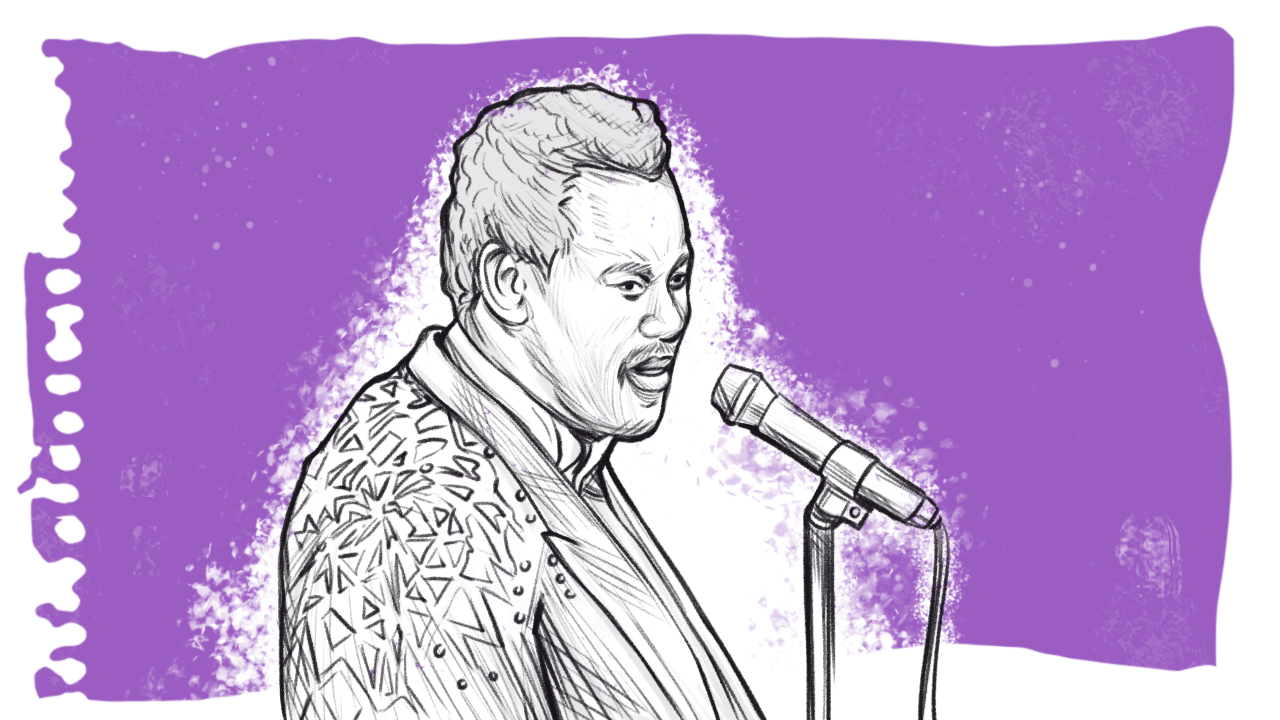Known for his soulful and sweet vocals, Luther Vandross made quite the impact on the music industry. In fact, he’s one of the greatest singers of all time, alongside Frank Sinatra and Diana Ross.
When we discovered that he started as a backup singer, we decided to learn more.
So, today, we’re diving deeper into Luther Vandross’ life.
Let’s jump in!
Luther Vandross’ Early Life
Born in New York City in April 1951, Luther Vandross was the youngest of four children. Both parents were singers and encouraged a love of music in their children. At age three, he began teaching himself piano.
Vandross’ father passed away when he was eight, and by age nine, the family moved to the Bronx. His sisters would take him to the Apollo Theater to see artists like Dionne Warwick and Aretha Franklin perform.
During high school, he performed in the group Shades of Jade, which also performed at the Apollo Theater. While a member of a theater workshop, Listen, My Brother, Vandross, and the others performed at the Harlem Cultural Festival in 1969. The group also performed on Sesame Street during its inaugural season.
Backup Singer for Popular Artists
Vandross broke into the music industry in 1973 when Delores Hall recorded two of his compositions on her album Hall-Mark. The following year, his friend Carlos Alomar invited him to a recording session for David Bowie.
The Velvet Voice went from an observer to a background singer, vocal arranger, and co-writer that day. He began to tour with Bowie while also having his song “Everybody Rejoice (A Brand New Day)” featured in Broadway’s musical The Wiz.

Bowie introduced Vandross to Bette Midler, who hired him to arrange vocals on her revue called Bette Midler’s Clams on the Half Shell. She later introduced him to her producer, and he began to get steady work arranging vocals and singing backup for various artists.
In 1977, Luther began writing and singing jingles for radio and television commercials. He became the voice for fast-food restaurants, telephones, and US military advertisements.
By 1978, Luther Vandross had been on more than a dozen albums for artists such as Carly Simon, Chic, and Roberta Flack.
From Change to Solo Career
In 1980, Vandross was still recording as a background vocalist and working as an arranger for other artists. He also began to find success as the lead singer of Change. The group recorded the Top 40 R&B hit “Searching.” As a result of his increased visibility, he began circulating a demo tape in hopes of starting a solo career.
In 1981, after signing with Epic, Luther Vandross produced and wrote six of the seven songs on his debut album, Never Too Much. The album hit #1 in R&B and was certified Gold four months after its release.
During this time, while finding solo success, he was still composing music for the likes of Roberta Flack and singing background vocals for Stephanie Mills, Bob James, and others.
Luther Vandross Musical Collaborations
Vandross continued demonstrating his abilities as a producer, songwriter, and arranger. This allowed him to work with the artists who were his idols in his younger years. He produced two of Aretha Franklin’s LPs. Luther also worked with Dionne Warwick on How Many Times Can We Say Goodbye, which became Warwick’s first R&B Top Ten hit in years.
He went on to sing with Gregory Hines and Mariah Carey. In addition, Vandross wrote and produced “Who Do You Love” for Whitney Houston and worked with Quincy Jones.
In the early 90s, Vandross worked with Patti LaBelle and Richard Marx. He was also on the soundtrack for Mo’ Money, performing “The Best Things in Life” with Janet Jackson, Ralph Tresvant, and Bell Biv DeVoe.
To say that Luther Vandross impacted the R&B scene would be a gross understatement.
Luther Vandross and His Velvet Voice
The Velvet Voice recorded eight solo albums by the time he released This is Christmas in 1995. By 1996, he had won another Grammy for R&B Vocal Performance.
Bass player Marcus Miller described Vandross as a “connoisseur of background singers” and “technically knowledgeable.” Miller attributes Luther’s knowledge of vocal skills to why he changed his mind about singers being someone who entertains to someone playing their own instrument.
Dionne Warwick described his voice as velvet, stating, “It was smooth to the touch, easy to feel, wonderful to look at.”
The Legacy of Luther Vandross
In April 2003, Vandross experienced a severe stroke that resulted in a two-month coma and left him unable to walk. His last public appearance was May 6, 2004, on The Oprah Winfrey Show. And in July 2005, he suffered a fatal heart attack.
Vandross influenced artists such as Boyz II Men, John Legend, Usher, and Ruben Studdard. In fact, John Legend said, “All us people making slow jams now, we was inspired by the slow jams Luther was making.” Mariah Carey has said it was intimidating to stand next to him when they recorded “Endless Love.”
A few months before his death, he released a tribute album, So Amazing: An All-Star Tribute to Luther Vandross. Various artists covered some of his most famous songs.
Aretha Franklin, Alicia Keys, John Legend, Jamie Foxx, and more artists lent their voices to the album. It sold 104,000 copies in its opening week and debuted at #4 on the US Billboard 200 chart.
The Velvet Voice Continues to Sing
Even if you’re not an R&B enthusiast, Luther Vandross has likely touched you musically. Whether listening to an arrangement from the 80s or 90s by Janet Jackson, Dionne Warwick, or Richard Marx or one of his ten albums, you’ve experienced his work.
Few people in the industry have affected so many through raw skill and talent. When he passed, the music world certainly lost a legend. Fortunately, his words and music are still available to those who love him.
What’s your favorite Vandross piece? Let us know in the comments below!
